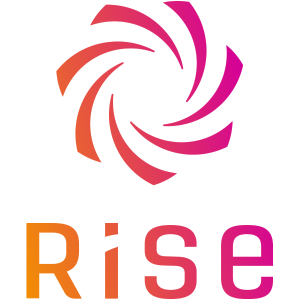The contemporary leader, immersed in an ocean of differences, faces a complex and changing landscape where a question inevitably pops into his or her head: Do organizations perceive the amalgam of identities and perspectives that make up my leadership? Does anyone understand what I am going through?
Particularly, we talk about leadership not only from the managerial skills that a leader must have, but also understanding the term as an immersion in the multiple layers that define the role in this context full of diversities.
Now, what do we mean when we talk about diversity?
Diversity is a broad concept that can be applied to different areas, such as social, cultural, generational or technological, among others. One author who has studied the concept of diversity is the social psychologist William W. Lambert, who defines it as “the presence of significant differences between individuals or groups“. Lambert argues that diversity is an inherent characteristic of human nature and that it is important to accept and appreciate differences among people.
In recent years, the focus has been on diversity in relation to gender or sexual identity; however, the challenge within organizations is crossed by other differences that challenge leaders to rethink not only their management tools, but also the way they communicate with their teams.
Labor diversity implies being inclusive, opening the doors of companies to anyone who wants and has the necessary talent to work in them. It means accepting differences in order to enrich services or products and ways of seeking solutions or developing innovative and complex projects.
It is a new way of managing talent and making the most of its creative capacity, managing teams, incorporating different points of view and understanding new needs.
Against this backdrop, why might leaders feel misunderstood?
There are several reasons why leaders may be misunderstood in a context of diversity. One of them is the two sides of the same coin: the demand for results and on the other, the demand for managing diversity and being a leader close to his or her teams. Often these expectations exceed reality and the leader is tugged by the desire to meet both.
Generally, when faced with the balance of demands, results weigh more heavily. This demonstrates a reality in which there are cultures that wish to go down a path of diversity, but reality shows that there are things to be adjusted. This reflection leads us to rethink leadership in a broad way in the organization, understanding the coherence between what they promote and what is the organizational reality. Spending time analyzing this aspect in an organization will promote greater identity and choice of their stay in an organization, especially in younger generations where these values are part of their DNA.
This situation leads us to think about the need to accompany the organization in accompaniment and training strategies to update and train leaders to incorporate new management habits that are compatible with organizational demands.
It is also necessary to work intensively on the psychological biases that influence the incorporation of diversity, understanding the internal times of change of all members and this is mainly observed in those organizations that are constantly incorporating companies. Many times the demands of the business do not give time to accompany “the new ones” who entered to incorporate the new culture, feeling a mix of emotions, resistances and lack of appropriation of processes, until they do not feel included.
So: what can leaders do in this context?
We can emphasize the following points:
- Prioritize in their agendas actions that fall under resolving situations of inclusion and diversity.
- Promote spaces to express these divergences and find, together with the leader or HR, strategies to balance needs.
- Develop skills such as cognitive flexibility and emotional agility that will allow them to go through the process of unlearning what they have learned in order to give opportunity to the new.
And, no less important, to understand that the level of connection they generate with others through their communication in each organizational space is key. By this, I am not only referring to relaxed spaces but, on the contrary, in moments of tension where it is difficult to respect diversity and inclusion; to be able to understand what are those points where they need more awareness to make a change of habit and to assimilate that every link will depend on the degree of connection generated with others. This will lead to the success or not of my communication and therefore, of my results and of making others feel accepted and valued regardless of their differences.
To conclude, the leader’s attitude towards change is key, but also the internal awareness of the organizations to deal with these unforeseen events to promote a space of accompaniment to new management habits.
And you, do you feel you are a leader who is understood?
Bibliography:
- Article: “The Challenge of Leading in a Diverse World” by Herminia Ibarra and David Thomas (2017).
- Book: “The Diversity Advantage: How Inclusion Matters to Everyone” by Herminia Ibarra and David Thomas (2017).
- Article: “Leadership in a Diverse World: The Role of Inclusion” by David Thomas and Robin Ely (2001)


